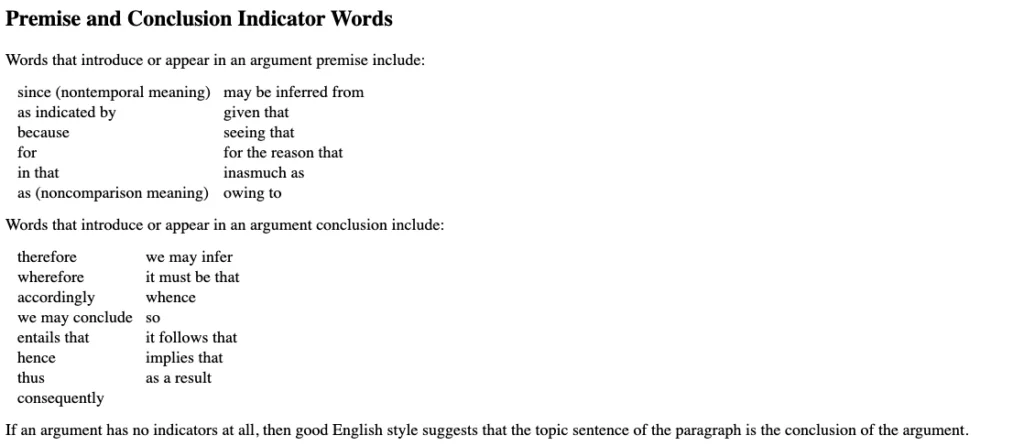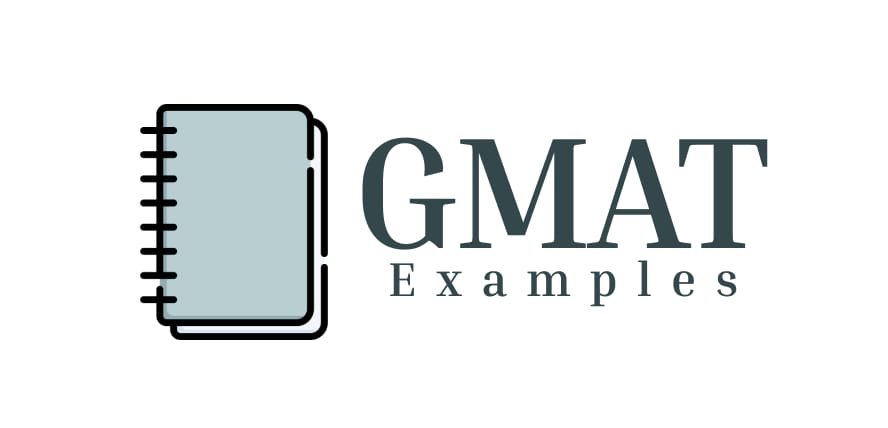GMAT critical reasoning accounts for ~30% of GMAT Exam Verbal Section questions. So, expect anywhere between 10-12 questions about critical reasoning. From what I have explored till now, there is comparatively less variation in terms of concepts vs sentence correction. But sentence correction is more objective than critical reasoning.
The exam tests for broadly 3 different areas:
- Argument Construction: What are they? What goes into making an argument?
- Argument Evaluation: Understand the role behind other components of the argument and the reasoning used.
- Evaluation of Plan: How does the new information change the plan regarding strengthening, weakening, etc?
GMAT Critical Reasoning Question Types
There are broadly 8 types of questions, and each one of the questions will ask you to do something related to the following types:
- Inference:
- Assumption:
- Evaluate:
- Strengthen:
- Weaken:
- Resolve the Paradox:
- Flaw:
- Boldface:
Premise & Conclusion
The premise is the information or facts used before concluding. On the other hand, the conclusion is a logical deduction from the paragraph. So, every argument has a conclusion that tells the main idea behind the paragraph. An argument is a combination of facts and a conclusion. On the other hand, premise, aka facts, leads to a conclusion.
Premise -> Conclusion
Key markers, some of which are in the image below, can help determine the premise and conclusion.

Counter Premise & Intermediate Conclusion
Similar to the premise, we might have facts about the conclusion that, unlike the premise, don’t aid in the conclusion but, on the other hand, present facts which might be in the opposite view. A statement can contain both the premise and the counter premise as well.
The counter premise can start with words like although, but, etc.
Besides the main conclusion, the paragraph can also contain intermediate conclusions. A statement can have only a single main conclusion. Thereby, any conclusion other than the main conclusion comes under intermediate conclusions.
Scope of Argument
Most GMAT critical reasoning section questions will be around strengthening, weakening or identifying gaps in the argument. This set of questions will need know-how on what can or cannot be doubted within an argument.
- Premise/Counter Premise: These are facts and cannot be doubted.
- Intermediate Conclusion/Conclusion: These components in the statement can be doubted. Since the conclusion and the intermediate conclusion are based on the reasoning from the premise. The third party’s opinions, referenced by an entity other than the author, can be doubted.
In short, facts cannot be doubted, but opinions based on reasoning etc can be. While the facts are actual, the ability to draw wrong conclusions cannot be ruled out. Also, the author of the argument is the one who states the conclusion,, and any conclusions other than those of the author cannot be the main conclusion of the paragraph.
The scope of an argument is the point or the circle up to which the argument can affect the conclusion. Only options within the scope of the argument are valid.
Assumption
Assumption forms the basis for most questions, directly or indirectly, within the critical reasoning section. The information is not explicitly mentioned within the statement, aka stimulus of the question, but needs to be valid for the conclusion to be proper.
Causal/Except Questions
Causal arguments go as X affecting Y. These are the implicit assumptions behind any causal argument:
- X, the cause occurs before the effect.
- The reverse is not valid.
- Only X causes the effect, not anything else.
Invalidation of anything of the above weakens the causal argument. Similarly, except questions are similar to other question types. The question is framed as a correct choice and will be a choice that is anything except an inference.
To be continued …
